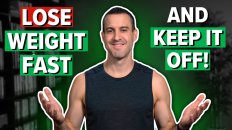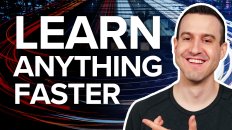The 10,000-hour rule was made famous by author Malcolm Gladwell in his best-selling book Outliers (2008). In it, Gladwell suggests that the key to becoming world-class at something, such as playing chess or performing with a musical instrument, is to spend 10,000 hours engaging in the activity. It’s a simple yet powerful message.
Unfortunately, it isn’t true.
“There is nothing special or magical about ten thousand hours,” according to Anders Ericsson, the Swedish psychologist responsible for the research on which the 10,000-hour rule was based. He goes on to explain, “Gladwell didn’t distinguish between the deliberate practice that the musicians in our study did and any sort of activity that might be labeled ‘practice.’”
Put differently, Gladwell failed to address the unique approach that the students in the study used to upgrade their skills. Instead, many of the examples covered in Outliers gave the impression that any time spent engaging in the goal activity would lead to further improvement, which contradicts Ericcson’s research.
The Three Different Types Of Practice
Unfortunately, not all forms of practice are equally effective for developing a skill.
In Peak (2016), Anders Ericcson and co-author Robert Pool explain three common approaches for engaging in practice. In doing so, they dismantled the idea that all forms of practice automatically lead to skill advancement. Furthermore, they clarify how the approach of world-class performers differs from that of mere hobbyists.
So, let’s quickly explore the basics of all three approaches.
Naive Practice
Naive practice is built on the misguided belief that time-spent leads to mastery.
When first setting out to learn a new skill, such as playing basketball, people often focus on the basics, like dribbling, shooting, and passing. From there, they may aim to shore up a few weaknesses to reach an acceptable level of performance. That’s the level at which they feel comfortable playing with their peers.
However, it’s at this point that most people hit a plateau. They no longer focus on developing specific skills and instead settle into a comfortable routine. As a result, they see little to no further improvement despite continuing to play the game for years. In some cases, depending on the pursuit, their skills may even decline slightly over time.
Purposeful Practice
Purposeful practice is focused on the achievement of specific, well-defined goals.
It involves getting outside one’s comfort zone to learn a new skill in a focused way, with clear goals, a plan for achieving those goals, and a way to monitor progress over time. Unlike naive practice, it requires clear expectations and total focus. The quality of the practice matters more than the quantity of time spent.
According to Anders Ericcson, the hallmark of purposeful practice is trying to do something you cannot already do. It involves practicing new skills repeatedly, focusing on exactly how you are doing them, where you are falling short, and how you can get better. Key to this is gathering reliable feedback to know if you’re improving.
Deliberate Practice
Deliberate practice follows the same core principles of purposeful practice. The key difference is it’s informed and guided by the best performers’ accomplishments and a deep understanding of what they did to excel. In the words of Ericsson, “deliberate practice is purposeful practice that knows where it’s going and how to get there.”
This approach allows experts to build on the progress of others. It’s why the latest generation of athletes, musicians, and gymnasts routinely outperforms experts from the previous era. Their coaches help them incorporate best practices, avoid mistakes of the past, and thus push the boundaries of what was previously possible.
Applying Deliberate Practice To Novel Pursuits
It’s worth noting there are relatively few fields in which deliberate practice can be applied in the strictest sense. These include, but are not limited to, playing chess, learning musical instruments, playing sports, and other Olympic-level competitions, such as gymnastics. In each case, the underlying skills are well understood, and effective training methods have been established that predictably lead to mastery.
With that said, it’s possible to apply the same basic strategy to less-developed pursuits. As Ericsson explains, “this often boils down to purposeful practice with a few extra steps: first, identify the expert performers, then figure out what they do that makes them so good, then come up with training techniques that allow you to do it, too.”
This typically involves identifying objective, reproducible measures that consistently distinguish the best performers from the rest. Or, when that is not possible, finding a way to approximate things as best as can be done. That way, there’s a reliable way to track one’s level of progress relative to the best performers in the field.
The Goal Is To Build “Mental Representations”
The key to becoming an expert is the development of mental representations that make it easier to spot patterns, make sense of complexity, and identify the correct course of action in a given situation. Even when a skill is primarily physical, a critical factor is the development of proper mental frameworks for engaging in the activity.
A mental representation is a cognitive structure that corresponds to an object, an idea, a collection of information, or anything else, concrete or abstract. For example, consider how the word “dog” allows people to communicate more efficiently about a pet. Three simple letters, or even just the sound they make, serve as a mental representation for a complex mammal with well-understood traits and behaviors.
This kind of efficient encoding of information is all around us. Almost everything we do, including walking, speaking, reading, and writing, is built on a complex web of mental representations. Without them, even the simple act of walking would require actively coordinating a complex series of muscle movements.
Consider how a child learns to ride a bike. Early attempts are often frustrating because they don’t yet know how to manage their balance while pedaling to keep the bike upright. However, once they develop the appropriate mental representations, riding becomes easy, even automatic.
The primary purpose of deliberate practice is to develop appropriate mental representations. Doing so initiates a virtuous cycle because better representations enable you to better monitor and evaluate your performance. Thus, the more skilled you become, the better your mental representations are, and the better your mental representations are, the more effectively you can improve your skill.
This is one reason why experts often appear to be fast learners. Their superior mental representations, developed through years of deliberate practice, provide a stronger foundation for adding related skills, abilities, and knowledge. So, while it may be true that they can learn faster today, that wasn’t always the case.
The lesson here is that aspiring experts always seek to identify weaknesses in their abilities. Then, they look for ways to address those issues by engaging in purposeful or deliberate practice. Doing so allows them to develop the mental representations needed to advance their skills or deepen their expertise.
Here’s What Gladwell Got Right (And Wrong)
We have a tremendous capacity for improving our abilities.
In conveying that inspiring message, Gladwell was correct. The human brain is indeed capable of rewiring itself to learn new skills. And yes, the key to creating remarkable results is to engage in practice over an extended period.
However, there is nothing special about 10,000 hours of experience.
Every pursuit is unique. In some cases, world-class expertise may be reachable in less time, while in others, it may take far more. It all depends on the goal or objective.
Most crucial of all, the method of practice is what matters most.
If you spend thousands of hours engaging in naive practice, you’ll likely have little to show for it. However, if you follow the principles of purposeful or deliberate practice, you can upgrade your skills by developing effective mental representations.
That is the path to becoming a world-class expert or performer.
Do You Have A Question Or Comment?
Please visit The “10,000-Hour Rule” Debunked video on YouTube to share your thoughts in the comment section.
You can also subscribe to The Rick Kettner YouTube Channel or The Rick Kettner Podcast to get updates about future book summaries and reading lists.


